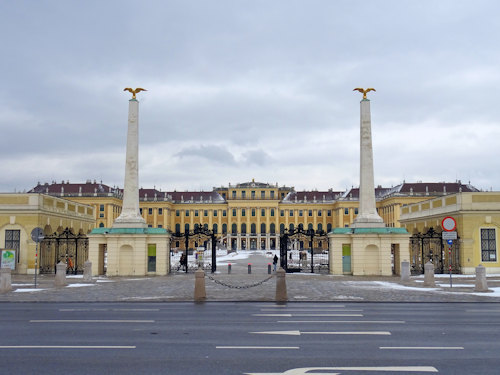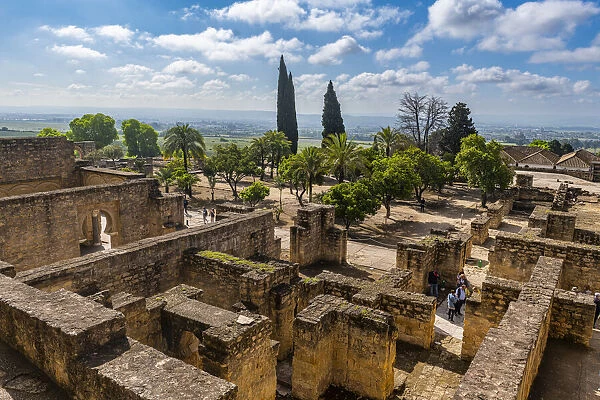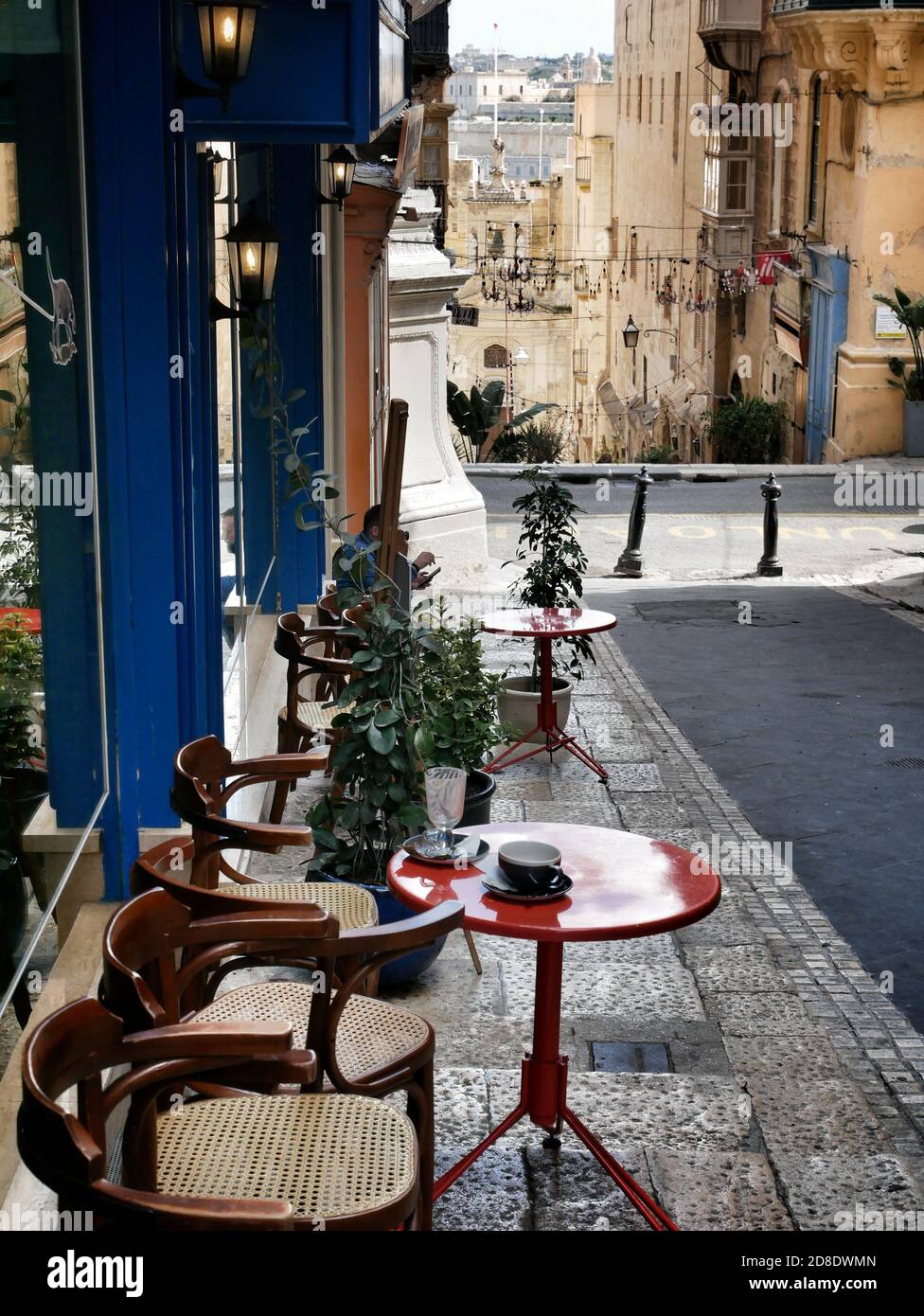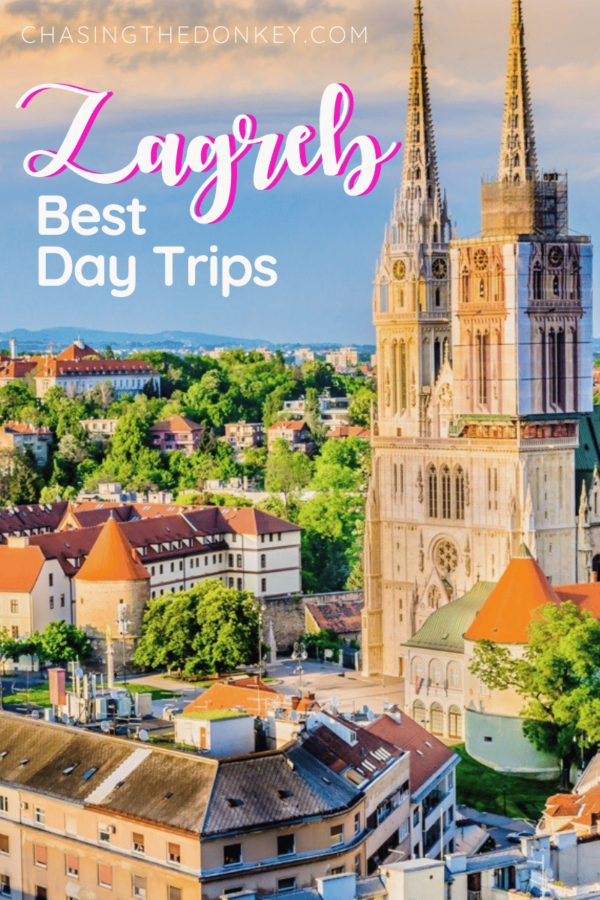Exploring Vienna: A Timeless Journey Through History and Culture
Vienna, the capital of Austria, is a city where history and modernity intertwine seamlessly. Renowned for its glorious past, grand architecture, and vibrant cultural scene, Vienna offers an unparalleled experience that captivates both the inquisitive traveler and the discerning historian. From its ancient Roman roots to its role as the capital of the Austro-Hungarian Empire, the city is a living testament to Europe's rich tapestry of history and culture.
The Historical Tapestry of Vienna
The history of Vienna stretches back over two millennia, with its origins rooted in a Roman settlement known as Vindobona. Established around 15 BC, Vindobona served as a significant military post and trading center. Although much of the ancient city has been lost over time, archaeological remains provide a fascinating glimpse into Vienna's early days.
Fast forward to the Middle Ages, and Vienna became home to the Babenberg dynasty in the late 10th century. This era marked the city's transformation into a major trading hub and cultural center. By the 13th century, the rise of the Habsburg dynasty further elevated Vienna's status, with the city ultimately serving as the capital of the Holy Roman Empire.
Under the Habsburgs, Vienna flourished as a political and cultural powerhouse. The dynasty's influence is evident in the city's architectural landscape, featuring landmarks such as the Hofburg Palace, which evolved from a fortress to a sprawling royal complex over several centuries. As a symbolic heart of the Habsburg Empire, the palace continues to attract history enthusiasts seeking to delve into Vienna's imperial legacy.
The Architectural Splendor of Vienna
Vienna's architecture is a mirror reflecting the city's dynamic history. Its skyline is a harmonious blend of Gothic, Baroque, and Art Nouveau styles, interspersed with modern structures. St. Stephen's Cathedral, or Stephansdom, is a quintessential example of Gothic grandeur. Completed in 1160, it has witnessed significant historical events and remains a spiritual and cultural landmark. Visitors stand in awe at the intricate stonework and towering spire, which offers panoramic views of the cityscape.
The Baroque era further shaped Vienna's architectural identity. The Belvedere Palace, built in the early 18th century under the patronage of Prince Eugene of Savoy, epitomizes Baroque elegance. Today, it houses an impressive art collection, including works by Gustav Klimt, whose shimmering masterpiece "The Kiss" draws art lovers from all corners of the globe.
Art Nouveau found expression in Vienna at the turn of the 20th century, with architects like Otto Wagner and artists from the Vienna Secession movement leaving an indelible mark. Wagner's Karlsplatz Stadtbahn Station and the Secession Building, adorned with its distinctive golden dome, are celebrated for their innovative designs and artistic significance.
Cultural and Musical Heritage
Vienna's cultural heritage is deeply interwoven with its status as a hub of classical music. The city has been home to some of history's most influential composers, including Mozart, Beethoven, Schubert, and Strauss. Their legacies continue to resonate through Vienna's concert halls and opera houses, such as the illustrious Vienna State Opera. Attending a performance here is a quintessential Viennese experience, where the sublime sounds of symphonies fill the air, transporting audiences to a bygone era of musical brilliance.
Beyond music, Vienna boasts a thriving arts scene, with museums that cater to every taste. The Kunsthistorisches Museum, an architectural marvel in its own right, houses an extensive collection of art and artifacts from across the world and through the ages. The Leopold Museum provides a glimpse into the Wiener Moderne movement, featuring masterpieces by artists like Egon Schiele and Oskar Kokoschka.
Vienna's intellectual and philosophical heritage also shines brightly. The café culture, epitomized by iconic establishments like Café Central and Café Sacher, served as breeding grounds for intellectual exchange during the 19th and 20th centuries. Figures such as Sigmund Freud and Gustav Mahler were known to frequent these cafés, engaging in vibrant discussions that helped shape modern thought.
The Enchantment of Vienna's Public Spaces
Vienna's allure extends beyond its architectural wonders and cultural offerings. Its public spaces, meticulously designed and maintained, offer residents and visitors a serene escape within the bustling city. The Stadtpark, with its lush greenery and famous golden statue of Johann Strauss II, is a popular spot for leisurely strolls. Meanwhile, the Prater's iconic Ferris wheel, the Riesenrad, provides breathtaking views of the city's ever-evolving landscape.
The city's commitment to preserving its green spaces is evident in the Volksgarten, home to the majestic Theseus Temple and a stunning rose garden. Further, the Schönbrunn Palace and Gardens, a UNESCO World Heritage site, stand as a testament to the opulence of the Habsburgs. The palace's gardens, spanning over a mile, invite visitors to wander amidst ornate fountains, meticulously trimmed hedges, and vibrant flowerbeds.
As one concludes their exploration of Vienna, the city leaves an indelible impression—a place where history, culture, art, and architecture converge to create a unique mosaic. Vienna is more than just a city; it is a timeless journey, continuously inviting those who visit to delve deeper into its rich past and vibrant present.
The Culinary and Coffeehouse Traditions of Vienna
Vienna is a city where history is not only experienced through its buildings and museums but also through its food and dining customs. Known for its culinary delights, Vienna’s food scene is an intricate part of its cultural identity. At the heart of this gastronomic journey is the classic Viennese coffeehouse, an institution so integral to the city’s culture that it is recognized by UNESCO as an Intangible Cultural Heritage of Austria.
The Viennese coffeehouse is more than just a place to grab a coffee; it is a timeless sanctuary where ideas are exchanged, art is crafted, and society mingles. Perfected over centuries, the tradition involves not just enjoying a cup of meticulously brewed coffee, but also indulging in an array of sweet treats. The Sachertorte, a decadent chocolate cake with a layer of apricot jam, is perhaps the most renowned Viennese dessert. With its origins dating back to 1832, the cake has become a symbol of Viennese confectionary art and can be savored at the legendary Café Sacher or Demel.
Beyond the sweetness, Vienna’s culinary scene is replete with hearty offerings like Wiener Schnitzel, a breaded and fried veal or pork cutlet, served with a side of potato salad or buttered parsley potatoes. The origins of this dish are hotly debated, but its place in Austrian cuisine is undisputed. Visitors can experience its traditional flavors at establishments that have been serving it for generations, offering an authentic taste of Vienna’s rich culinary heritage.
Pulsing beneath the city’s historic charm, Vienna's wine culture is another vital facet of its gastronomic landscape. While Austria may not be the first country that springs to mind as a wine destination, the vineyards located on the outskirts of Vienna produce excellent varietals, especially the crisp and peppery Grüner Veltliner and the aromatic Riesling. The heuriger, traditional wine taverns, offer an authentic setting to savor these local wines alongside rustic platters of cold cuts and cheeses, allowing guests to participate in the age-old Viennese practice of Gemütlichkeit—a warmth and friendliness symbolic of local hospitality.
Festivals and Events: An Ongoing Celebration of Vienna's Spirit
Vienna’s vibrant spirit is continually invigorated by a calendar full of festivals and events that showcase its cultural riches and communal warmth. Among the city's signature events is the Vienna Opera Ball, a glamorous celebration rooted in tradition that transforms the State Opera into an enchanting ballroom. Steeped in history and attended by dignitaries and international stars, the event epitomizes Viennese elegance and refinement.
For contemporary art enthusiasts, the Vienna Biennale presents a forward-looking perspective on art, design, and architecture. Held every two years, this event brings cutting-edge creations to the city, offering a platform for discussion and inspiration about the role of art in shaping the future.
In the winter months, Vienna's chilly streets come alive with the enchantment of Christmas markets. These festive gatherings—such as the ones at Rathausplatz and Schönbrunn Palace—are adorned with twinkling lights and replete with stalls offering artisanal crafts, holiday treats, and the comforting scent of punch wafting through the crisp air. It is a time when the city, draped in a layer of snow, becomes a wonderland reminiscent of a fairy tale.
Springtime in Vienna heralds the arrival of the Vienna Spring Festival, celebrating the season with outdoor concerts, garden events, and seasonal food offerings. The vibrant blooms of the city's many parks and gardens provide the perfect backdrop for celebrating new beginnings, as residents and visitors alike immerse themselves in the sights, sounds, and flavors of spring.
Vienna's Commitment to Innovation and Sustainability
While steeped in history, Vienna is not solely content to rest on its past laurels. The city is at the forefront of innovation and sustainability, aspiring to become a model metropolis for future generations. Long recognized for its high quality of life, Vienna actively pursues environmentally friendly initiatives, focusing on preserving its natural resources, reducing carbon emissions, and fostering a green urban environment.
Urban planning projects, such as the Aspern Seestadt—a smart city development—showcase Vienna's commitment to sustainable living. This ambitious project integrates renewable energy solutions, efficient public transportation, and green spaces to create a self-sustaining community that balances urban living with environmental stewardship.
Moreover, the city’s public transportation network is lauded worldwide for its efficiency, affordability, and eco-friendliness. Well-designed trams, buses, and trains weave through Vienna’s districts, offering residents and tourists convenient access to all corners of the city while reducing reliance on personal vehicles.
Vienna’s emphasis on protecting the environment extends to its food scene, where farm-to-table dining is gaining prominence. Restaurant owners and chefs are increasingly sourcing local, organic ingredients, supporting regional farmers and ensuring that fresh, seasonal produce graces the city’s tables. This culinary trend not only keeps menus vibrant and diverse but also underscores Vienna’s holistic approach to sustainability.
In conclusion, Vienna is a city where every street corner whispers tales of a glorious past while the present boldly strides towards a brighter future. Whether exploring its rich history, indulging in its culinary delights, attending world-class festivals, or engaging with its innovative spirit, Vienna offers an experience as dynamic and multi-faceted as the city itself. It is a destination that continually inspires and enriches the lives of those who journey through its storied streets, inviting visitors to return again and again to discover all it has to offer.
Vienna's Role on the International Stage
Beyond its historical and cultural riches, Vienna plays a significant role on the global stage as a center for diplomacy and international cooperation. The city hosts numerous international organizations and agencies, cementing its status as a hub for cross-cultural dialogue and policy-making. Foremost among these institutions is the United Nations Office at Vienna (UNOV), one of four major UN offices around the world.
The presence of the International Atomic Energy Agency (IAEA), the Organization for Security and Co-operation in Europe (OSCE), and the United Nations Industrial Development Organization (UNIDO), among others, highlights Vienna’s pivotal role in fostering international peace and cooperation. These institutions attract a diverse array of diplomats, strategists, and experts, making Vienna a city where global issues are addressed and resolutions crafted.
Vienna's commitment to international collaboration is further exemplified by its vibrant academic and intellectual scene. The city boasts a multitude of esteemed universities and research institutions, such as the University of Vienna, one of the oldest and largest in Europe, and the Vienna University of Technology. These institutions draw students and scholars from around the world, enriching the academic landscape with their diverse perspectives and innovations in science, technology, and humanities.
The Neighborhoods of Vienna: A Tapestry of Diversity
Vienna’s distinct neighborhoods each offer a unique blend of history, culture, and modernity. As one traverses the city's districts, or "Bezirke," they are met with an array of experiences that reflect Vienna’s multifaceted character.
Innere Stadt, or the First District, lies at the heart of Vienna. This UNESCO World Heritage site is characterized by its opulent architecture, grand boulevards, and historic significance. Walking through its cobblestone streets, visitors are surrounded by iconic landmarks like the Hofburg Palace, St. Stephen's Cathedral, and the Spanish Riding School. Cafés, upscale boutiques, and galleries line the streets, providing a luxurious backdrop to this historic center.
Across the Danube Canal lies Leopoldstadt, known for its dynamic mix of cultures and communities. This district is home to the Prater, Vienna’s famous public park, and the colorful Karmelitermarkt, a market where a diversity of culinary delights can be sampled. Leopoldstadt’s vibrant Jewish history is celebrated in its synagogues and cultural centers, underscoring the neighborhood’s storied past and hopeful future.
Exploring Margareten and Mariahilf, visitors encounter a lively blend of the traditional and the avant-garde. These districts are famous for their vibrant art scene, independent galleries, and theaters that celebrate Viennese creativity in all its forms. Here, the viennacontemporary art fair takes place annually, drawing artists and art lovers alike to explore the latest movements and innovations in contemporary art.
The city’s dedication to the future is evident in the emerging neighborhood of Seestadt Aspern. Designed as a model for sustainable urban living, Seestadt embraces state-of-the-art architecture and environmentally friendly practices. This "smart city" is a testament to Vienna's ability to adapt and innovate while providing residents with a high quality of life.
Vienna as a Timeless Treasure
As a city of profound historical depth, cultural richness, and relentless innovation, Vienna continues to charm those who visit its storied streets. Its stately architecture, from the grandeur of the imperial past to the sleek lines of modern design, serves as a visual narrative of Vienna’s evolution.
Whether basking in the city’s artistic heritage, indulging in its culinary wonders, or marveling at its architectural splendors, travelers are invited to immerse themselves in a vibrant narrative that is as enduring as it is transformative. Vienna’s seamless blend of old-world charm and progressive dynamism ensures that it remains a city that never ceases to inspire.
The enduring allure of Vienna lies not only in its majestic past but also in its open embrace of the present and future. As a city that stands as both a custodian of history and a pioneer of innovation, Vienna continues to captivate the imagination of all who have the fortune to experience its myriad delights. Vienna is, without doubt, a timeless treasure waiting to be discovered, offering an immersive journey into the heart of Europe’s cultural and historical legacy.
























Comments